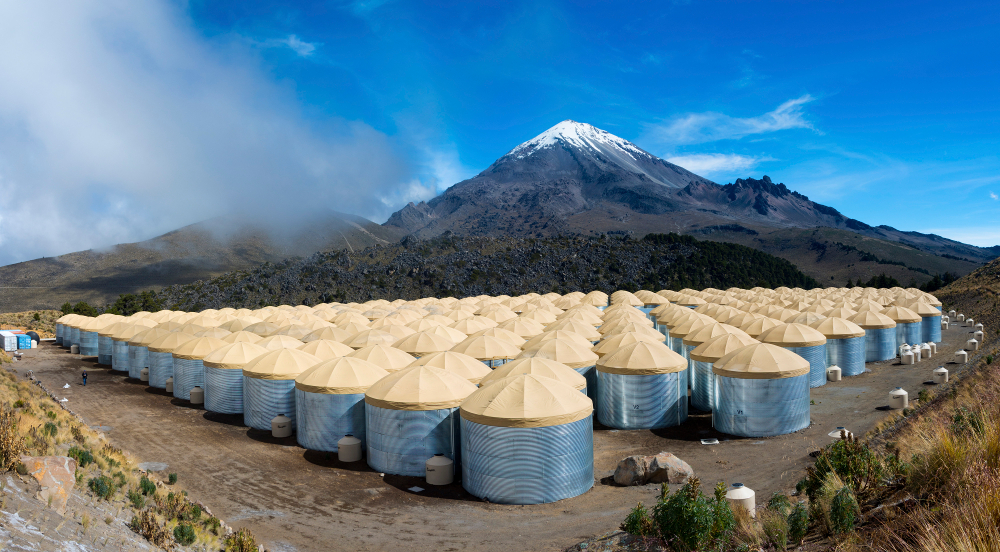
 Credit: J. Goodman
Credit: J. Goodman
Seeing with Water
Observing the highest energy radiation produced by the Universe requires novel techniques and quite a bit of ingenuity. Orbiting satellite observatories like the Compton Gamma-Ray Observatory, AGILE, INTEGRAL, Swift, and the Fermi Gamma-Ray Space Telescope observe high energy sources by looking at the shadows that they cast, or by converting radiation to matter and plotting the tracks the particles make. Other observatories like HESS and VERITAS actually use the earth's atmosphere to detect and track incoming high energy photons from deep space. The High-Altitude Water Cherenkov Gamma-Ray Observatory (HAWC) is perhaps one of the most unusual of these high-energy observatories. HAWC, located on the side of the Sierra Negra volcano near Puebla, Mexico at an altitude of 4100 meters, uses 300 large corrugated steel tanks four meters high and 7.3 meters in diameter, each filled with water and containing four sophisticated light detectors. High energy charged particles entering the water tanks faster than light can move through the water produce a special kind of blue light called Cherenkov radiation in a cone about 41 degrees wide which can be detected by the light detectors. HAWC covers about 15 degrees of the sky instantaneously, while the rotation of the earth allows HAWC to scan much of the sky. The image aboves shows the water tanks of the HAWC observatory.
Published: May 27, 2019
<
HEA Dictionary ● Archive
● Search HEAPOW
● Other Languages
● HEAPOW on Facebook
● Download all Images
● Education ● HEAD
>

Each week the HEASARC
brings you new, exciting and beautiful images from X-ray and Gamma ray
astronomy. Check back each week and be sure to check out the HEAPOW archive!
Page Author: Dr. Michael F. Corcoran
Last modified Tuesday, 27-Feb-2024 10:13:25 EST


